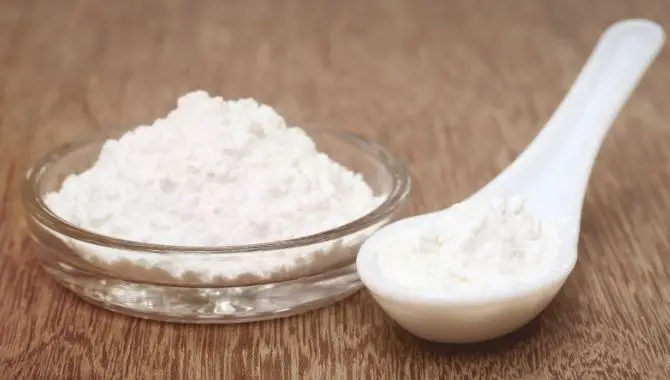As a vegan, I cannot stress enough the importance of reading the ingredients list on every food package to ensure you’re eating healthily while also maintaining your commitment to vegan ethics. But determining vegan-friendly products is not always an easy task, especially with processed foods.
That’s because they are likely to contain a lot of unfamiliar items whose vegan status may not be that obvious. One such ingredient is cellulose gum, also known as CMC or carboxy-methylcellulose. CMC is a modified natural cellulose product with some major uses in the food industry, as well as in non-food products. If you are a cognizant vegan, you may be wondering how this ubiquitous ingredient is made and whether it should be part of your diet.
Is cellulose gum vegan? Yes, this food ingredient is generally considered vegan because it is derived from cellulose. Cellulose is the most abundant organic compound on earth as it’s found in the cell walls of all plants. Unlike the normal cellulose that’s not water-solvent, cellulose gum is artificially charged to be more soluble, thus giving it helpful properties as nourishment and non-nourishment additive.
If you are a vegan, you need to be very careful when shopping to avoid hidden ingredients in your food products that are animal-based (whether derived from or tested on animals). Food products are legally required to include an ingredients list, which makes it easy to see everything included in them. The same doesn’t apply to non-food products, meaning you’ll have to do a little more research to make sure you are buying 100% vegan products. Cellulose gum is one such ingredient that is applicable in both food and non-food products, and today we are going to cover the capacity it serves in different applications.
Is Cellulose Gum Vegan?
As I had mentioned earlier, CMC is a cellulose derivative. Cellulose is made up of a group of glucose molecules and is typically the biggest source of insoluble fibre found in plants. Manufacturers of cellulose gum make this food additive from the structural parts of various plants, including cotton, trees, etc.
When this odourless, tasteless, and white/milk-white fibrous powder is dissolved in water, it forms a viscous consistency depending on the amount that is added. The end product is completely stable to heat, microorganisms, and weak alkalis or acids. Unlike other food additives in the same class (gelatine for instance), CMC is favourable because it’s classified as vegan.
Cellulose Gum Applications in Foods
As a Thickener and Emulsifier
CMC is often used in food products as a thickener or thickness modifier and to help balance out emulsions in foods. As an emulsifier, it allows fat to be scattered consistently throughout the batter blend, thereby making the mixture simpler to work with. CMC can also be used to slow down the formation of ice crystals in ice cream; after all, nothing spoils a delicious bowl of a vegan scream than freezer burn.
Thickeners as Fat Substitutes
Fat makes foods more delicious and improves mouth-feel but as we all know, it’s not the healthiest food choice. Cellulose gum is often used as a replacement for fat in low-fat foods to give them a creamier and thicker texture but without all the fat. It offers alluring fat-like properties such as shiny appearance, surface alteration, expanded thickness, fatlike mouth-feel, and strength (helps the fixings remain decent and blended).
Needless to say, foods that use cellulose gum are not only ideal for a vegan diet but also suitable for low-fat diets or if you are trying to reduce your fat intake, whether to help lose weight or for health purposes.
Acts as a Stabiliser
CMC maintains homogeneity as it keeps oil and water-based ingredients properly combined, thereby ensuring all nutrients remain mixed. It also locks in moisture to keep foods from going stale, thus extending shelf life. Still, on its function as a stabiliser, it produces an appetizing texture in foods.
Gluten-Free Products
This food additive is a common replacement for gluten in gluten-free products because it has a great deal of equivalent properties. Just like gluten, CMC provides strength and elasticity that causes fixings to follow and extend, which in turn permits dough ingredients to rise.
Candy
CMC in candy allows for a smooth scattering of fixings while improving quality and surface.
Acts as Filler
Cellulose is a type of fibre, which as you may know, is good for digestion and for blocking the absorption of cholesterol. Cellulose gum is available in many diet food products where it acts as filler, meaning it keeps you feeling full. It does, however, increase the fibre content in foods. For this reason, eating too many foods that contain cellulose gum might have laxative effects, thereby resulting in loose bowel movements.
Cellulose Gum Applications in Non-Food Products
The general definition of veganism is people who abstain from consuming any animal products or by-products, and this extends beyond food. When you choose to adopt a vegan lifestyle, every product that you use, from food to clothing to household things and even services you get, should not contribute to animal exploitation. Some go as far as boycotting otherwise vegan-friendly companies that contribute indirectly to animal exploitation.
Clearly, vegans should pay attention to the vegan status of non-food products as well. Consequently, CMC is a common constituent in several non-food items, including toothpaste, pharmaceuticals, water-based paints, different paper items, detergents, reusable heat packs, and so on. These items make use of CMC because it is non-toxic, has a high viscosity, and is generally considered to be hypoallergenic. It also has good compatibility with other water-soluble glues, resin, and softeners. Other common uses include:
- In counterfeit tears where CMC is used as an ointment in eye drops
- Clothing cleansers where it’s helpful as a dirt suspension polymer
- Ice packs where it’s utilized to form a eutectic mixture, thus resulting in a lower freezing point with more cooling capacity than ice.
Is Cellulose Gum Bad For You?
Cellulose gum is generally considered safe as it’s naturally and minimally processed. However, since it’s just an additive and not a whole food ingredient, there could be some unknown health risks from consuming it. It’s unfortunate that studies looking into that have not yet been conducted.
While it’s unlikely to cause harm in most people, a recent case study has shown that some people are allergic to this food additive. If you experience stomach problems like diarrhoea, gas, and/or bloating after consuming cellulose gum, then you can confirm that you are allergic to it and eliminate any food product that contains it from your diet. People with irritable bowel syndrome (IBS) who develop symptoms from various foods may also be sensitive to cellulose gum. Be sure to consult with your doctor before cutting foods out of your diet though. The good news is cellulose gum isn’t digested or absorbed, which makes risks like allergic reactions very rare.
Even though CMC is derived from cellulose, which is the biggest source of dietary fibre, you cannot include fibre from cellulose gum when counting your total daily fibre intake because it’s not the healthy kind. For this reason, you should still strive to get your dietary fibre from whole foods. That being said, CMC is very fibrous and consuming too many products that contain it can cause issues for people with stomach sensitivities. Symptoms will include bloating, gas, and loose bowel movement.
Vegan Cellulose Gum – Final Thoughts
Cellulose gum is a fairly safe food additive as seen from the uses, benefits, and risks outlined above. It is not only suitable for vegans, but also those trying to reduce fat intake for weight loss or general health. It’s a very useful additive to all kinds of food products although nutritionally speaking, it offers no real value.
While most people don’t need to worry about avoiding CMC or limiting its intake, I believe knowledge is power. As you keep reading labels on food products, especially the ingredients list and nutritional facts, you’ll become better equipped at identifying unfamiliar ingredients and ensuring they are in line with your vegan ethics and good for your body. From there, you can make an informed decision about any food changes you need or want to make to have healthier, ethical habits.
Welcome to VeganClue - My name is Robert Van De Ville and together with my team we spent hundreds of hours researching the most relevant topics for Vegans and non yet Vegans. Are you looking for more information about Veganism, animal welfare, diet, health, and environmental benefits of the Vegan lifestyle? You are in the right place! Enjoy the site.


